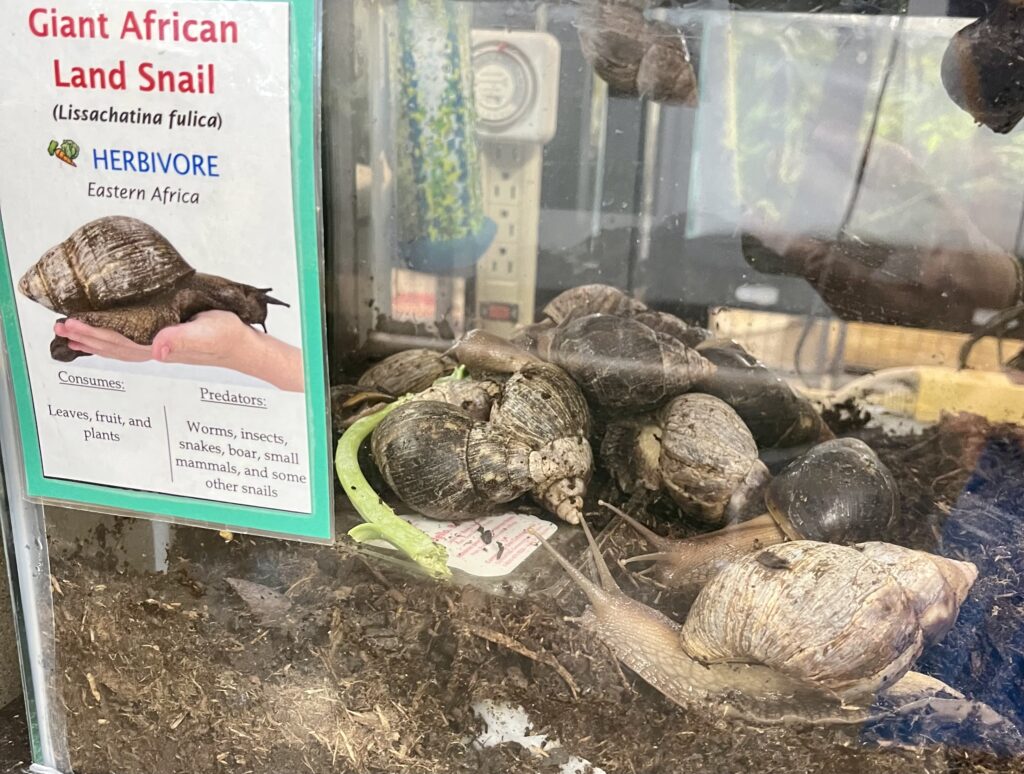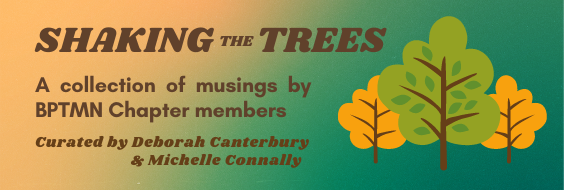Leah Justice, 2021
As I started to clean a food dish from the decomposer tank at the Heard Museum, I noticed a very teeny tiny snail clinging to a piece of food. Is there such a thing as a baby snail? Not being familiar with the life cycle of snails, a bit of research was necessary to answer this simple question. It was soon apparent how large and diverse this class of creatures is! According to Wikipedia, “At all taxonomic levels, Gastropods are second only to the insects in terms of their diversity.” So where to start? Gastropods belong to a large class of invertebrates in the phylum Mollusca. The word Gastropod comes from the Greek words gastro (stomach) and pod (foot). Commonly known as snails and slugs, they were believed to first exist during the Paleozoic Era. Gastropods have been very successful living in all types of environments. You can find them in the ocean, in fresh water and on land.
Let’s narrow the scope and look at the life cycles of terrestrial or land snails. A great majority of land snails are hermaphrodites with a complete set of both male and female reproductive organs. These snails still seek out partners and perform courtship behaviors before mating. In slow snail style, this courtship could last anywhere from two to twelve hours. There are even some land snail families that shoot love darts. These darts are comprised of a structure of calcium or chitin that pierce the skin of the other snail during the courtship. Once the snails eventually mate, each can lay eggs, making them prolific breeders. The Holifield Learning Center has Giant African Land Snails on exhibit. Each of these hermaphrodite snails can lay 5 to 6 clutches a year. The caretakers are always on the lookout for eggs; when they find them, they are removed. Imagine if all the eggs hatched, they would end up with hundreds of these huge snails! Many land snails can also lay eggs without mating, known as asexual reproduction. At Holifield, a single Giant African Land Snail living alone in an enclosure laid eggs on its own without the involvement of another snail.

In general, snails usually dig and bury their eggs in topsoil with an incubation period of 2 to 4 weeks. Once the eggs hatch, you have baby snails! The newly hatched snails develop quickly, and their calcium carbonate shell continues to grow with them. The lifespan of a land snail could be anywhere from 1 to 10 years, depending on the species.
In iNaturalist, our chapter has logged 457 Gastropod observations, including 29 species. The two types of snails seen the most were Decollate Snails and Globular Drop Snails. Decollate Snails originated from the Mediterranean and are considered an invasive species here. They are mature at about 10 months of age and can lay about 200 eggs a year. Globular Drop Snails are extremely common in our area and are adept at surviving climate changes. They will burrow when it freezes, and they go into estivation during drought.
In conclusion, there are baby snails. These babies can adapt to different environments and reproduce with or without mates when they grow into adults. For these same reasons, snails can also quickly become problematic. Good or bad, snails play an essential part in the ecosystem, and there is much more to learn about these fascinating creatures!
Take a look at these interesting links about snails: mollusks and crustacea :
Texas Invasive Species Institute (tsusinvasives.org)
Lissachatina fulica – Wikipedia (Giant African Land Snails)
Resources:
http://www.tsusinvasives.org/home/database/rumina-decollata
Decollate Snail / UC Statewide IPM Program (UC IPM) (ucanr.edu)
Gastropods – PUB2917 | Missouri Department of Natural Resources (mo.gov)




